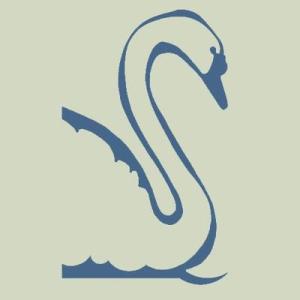 Have you ever wondered why there is a swan on the Lowewood Museum logo?
Have you ever wondered why there is a swan on the Lowewood Museum logo?
The Borough of Broxbourne, situated in the Lea Valley, is made up of four small towns —Broxbourne, Cheshunt, Hoddesdon and Waltham Cross—that originally were settlements along the course of the River Lea.
The river, its environment and wildlife have always influenced many aspects of life in the area and this has continued, in spite of urbanisation, providing street names, trade names for local businesses and the names of numerous local inns and pubs, some of which date back at least to the 16th century. The name Broxbourne is itself a typical example of naming from the environment, from brock, an old Celtic word for badger and bourn, meaning small stream, a southern variation of the Scottish burn.
Swans are a common sight on the River Lea and other water courses in the district, so these have become particularly significant and representative of the area.

At the southern end of the borough, in Waltham Cross, the Four Swans Inn was established around 1600. Its gallows-style sign once spanned the main road as approached when travelling north. The inn itself was demolished some years ago, but the sign has been preserved and now spans the pedestrian area in front of the Pavilions shopping centre. The four swans on the top of the sign have been re-made of durable fibre-glass, but the original swans, carved out of elm, can now be found in the reception area at Lowewood Museum.
In the centre of Hoddesdon, facing the landmark clock-tower, is the White Swan Inn, a 16th century building. Known originally as simply The Swan or Old Swan, its current name has been established since 1756, when it could boast of stabling for sixty horses. The original inn sign, also gallows-style, once also spanned the main road north, as did the Four Swans in Waltham Cross, but, sadly, it wasn’t preserved.


